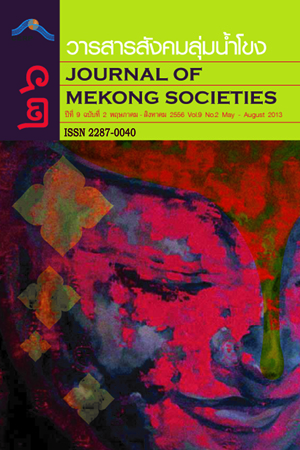Tracking Fon-Ngeue Songs: Musical Relationships among Ethnic Groups in the Mekong River Basin
Main Article Content
Abstract
This article aims to study the relationship in the music of various ethnic groups in the Mekong River basin through a new perspective that analyzes the structure of these groups’ music. The purposed musical relationships are among the Thai Yai, Thai, Lao, Karen, and Southern Chinese. An analysis was made of each group’s songs, which are the Fhon-Ngiao (Saylaymao), Ngiao-Rumleuk, Khuhlab-Viungping, Theiy Khong, and Ava Lunming Sang Singur. The latter is played with a flute made from a gourd (Hu Lu Sut) by people in Southern China and with a harp (nadeng) by the Karen people as an introductory song. The study analyzes several elements of music, including scale, melodic structure, and melodic pattern. The study found that there is a relationship among the music of these five ethnic groups in terms of the following: 1) musical scale, 2) melodic structure, and 3) melodic pattern. The three aspects of the relationships in the music are shown clearly in the song examples. Using history and anthropology to support the theory, a link between the cultures of the ethnic groups can be seen. The results from the study show the features of the music more clearly and demonstrate that there is a relationship among the musical features of the ethnic groups of the Mekong River Basin. This study is a new approach which relies on the link between music history and anthropology to reflect the unique music of ethnic groups of the Mekong River Basin.


